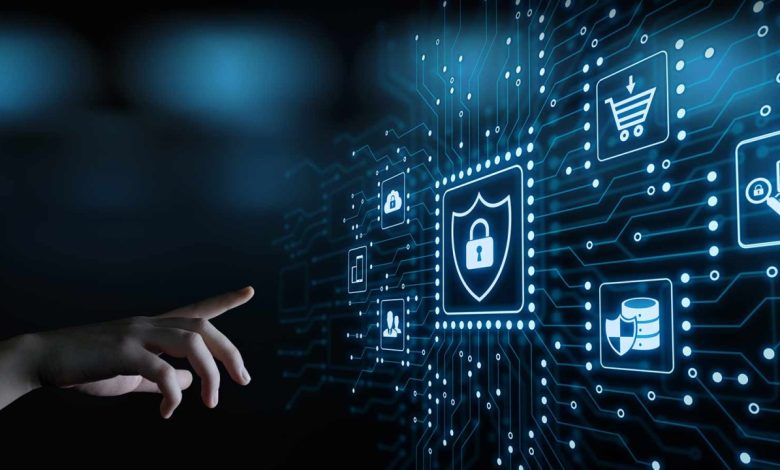Cybercrime Explained: Effective Ways to Safeguard Against Cyber Threats
Understanding Cybercrime and Protecting Yourself from Cyber Attacks

Introduction
As technology continues to evolve, so too does the complexity of crimes committed online. In our digital world, cybercrime has emerged as one of the most serious threats to individuals, businesses, and governments. With vast amounts of sensitive information circulating through cyberspace, cybercriminals have found new ways to exploit vulnerabilities for their gain. From stealing identities to breaching corporate databases, cybercrime can have far-reaching consequences.
In this post, we’ll delve into what cybercrime is, explore its many forms, and offer practical guidance on how to prevent cybercrime. The goal is to equip you with the knowledge and tools necessary to safeguard your personal and professional digital assets in an increasingly connected world.
What is Cybercrime?
Cybercrime refers to illegal activities that involve the use of computers, networks, or digital devices. This type of crime can target individuals, organizations, or even national infrastructure. Cybercrime is not limited to hacking but includes a wide range of malicious activities that exploit the internet and digital technologies to commit fraud, theft, and harm.
Common Types of Cybercrime
There are numerous types of cybercrimes that occur in the digital realm. Some of the most prevalent forms include:
- Malware
Malware, short for malicious software, is designed to infiltrate, damage, or disable computers. Cybercriminals use various types of malware, such as viruses, worms, and Trojan horses, to gain unauthorized access to systems and steal data or cause disruption. - Phishing Scams
Phishing is a technique used to deceive individuals into divulging personal or financial information. Cybercriminals often pose as reputable entities in emails or websites to trick victims into revealing sensitive information, such as passwords or credit card numbers. - Ransomware Attacks
Ransomware is a form of malware that locks victims out of their systems or files until a ransom is paid. Victims may face losing their data permanently if they fail to meet the attackers’ demands. These attacks are especially damaging to businesses and institutions, where critical data is held hostage. - Identity Theft
Cybercriminals steal personal information, such as Social Security numbers, to commit identity theft. Once obtained, this information can be used to open bank accounts, apply for loans, or make fraudulent purchases in the victim’s name. - Online Fraud
Online fraud encompasses a variety of schemes, including auction fraud, credit card fraud, and investment scams. Criminals use the anonymity of the internet to carry out these activities, often tricking victims into providing money or valuable information. - DDoS Attacks (Distributed Denial of Service)
A DDoS attack involves overwhelming a website or online service with a massive amount of traffic, causing it to crash. These attacks can cripple websites, making them inaccessible to users and causing significant disruption to businesses. - Cyberstalking
Cyberstalking is the use of the internet to harass or intimidate someone. This can involve threatening emails, social media harassment, or malicious posts aimed at causing emotional or psychological harm to the victim.
The Ramifications of Cybercrime
The effects of cybercrime can be damaging on multiple levels, impacting both individuals and organizations. The financial cost of cybercrime continues to rise, but the harm extends beyond mere monetary losses.
Impact on Individuals:
- Loss of personal data, such as medical records, financial information, and private communications
- Damage to credit scores and financial well-being due to identity theft or fraud
- Emotional distress, anxiety, or trauma from harassment or stolen identities
- Difficulty restoring stolen identities or correcting fraudulent transactions
Impact on Businesses:
- Loss of proprietary information, trade secrets, or confidential data
- Financial losses due to fraud, ransomware payments, or regulatory penalties
- Disruption of operations and productivity following an attack
- Damage to brand reputation, leading to a loss of customer trust and loyalty
With cybercriminals constantly developing new methods to infiltrate systems, it’s critical to adopt preventative measures that will reduce the likelihood of becoming a victim of cybercrime.
How to Prevent Cybercrime
Protecting yourself or your business from cybercrime requires a combination of best practices, tools, and awareness. The following steps can help minimize your exposure to cyber threats:
1. Create Strong, Secure Passwords
A strong password is your first line of defense against cybercriminals. Ensure that each of your accounts has a unique password that contains a mix of letters, numbers, and symbols. Avoid easily guessable information such as birthdays or names. A password manager can help you securely store and manage multiple complex passwords.
2. Activate Multi-Factor Authentication (MFA)
Multi-factor authentication provides an added layer of security beyond your password. With MFA, you must verify your identity using an additional method, such as a text message code or a fingerprint. This makes it significantly harder for attackers to access your accounts, even if your password is compromised.
3. Regularly Update Software and Devices
Cybercriminals often exploit outdated software with known vulnerabilities. Keep your operating systems, apps, and devices up to date by installing the latest security patches and updates. Automatic updates can help ensure you’re protected without having to remember manual updates.
4. Install Antivirus and Anti-Malware Software
Using trusted antivirus and anti-malware programs is essential to detect, block, and remove malicious software from your devices. These tools can scan for viruses, ransomware, and other threats, providing a critical layer of protection against cyberattacks.
5. Be Wary of Suspicious Emails and Links
Phishing emails and links can appear to be legitimate but are designed to steal your information. Always verify the sender’s identity before opening any email attachments or clicking on links. If something seems suspicious, delete the email or report it to your IT department.
6. Protect Your Wi-Fi Network
An unsecured Wi-Fi network can be an easy target for hackers looking to intercept your data. Secure your home or business network with a strong password, and consider using encryption options such as WPA3. When accessing public Wi-Fi, avoid conducting sensitive activities, such as online banking, without using a virtual private network (VPN).
7. Regularly Backup Important Data
Whether it’s personal files or business documents, regularly backing up your data can save you in the event of a cyberattack. By storing backups in secure, off-site locations or using encrypted cloud services, you can ensure that you’ll always have access to critical information, even if your primary system is compromised.
8. Educate Yourself and Your Team
For businesses, employees are often the weakest link in cybersecurity defenses. Ensure that all employees are trained on recognizing phishing attempts, understanding safe internet practices, and following internal security policies. Regular training sessions can help reinforce the importance of staying vigilant against cyber threats.
9. Use Firewalls and Security Monitoring Tools
Firewalls create a barrier between your internal network and external cyber threats, while monitoring tools detect suspicious activity. Businesses should implement firewalls and network monitoring systems to identify and mitigate potential breaches as they occur.
10. Review Financial Statements Frequently
Cybercriminals often target financial accounts, making it important to regularly check bank statements, credit reports, and online accounts for unauthorized activity. Early detection of fraud can help prevent significant financial damage.
Emerging Cybersecurity Strategies
As cybercrime continues to evolve, so do the methods used to combat it. Here are some cutting-edge approaches being implemented to stay ahead of cyber threats:
1. Behavioral Analytics
Behavioral analytics focuses on monitoring user behavior to detect anomalies. If a user suddenly downloads an unusual amount of data or logs in from an unfamiliar location, behavioral analytics can trigger alerts to prevent possible attacks.
2. The Zero Trust Model
The Zero Trust security framework assumes that no one, whether inside or outside the network, is automatically trusted. Every user and device must be continuously authenticated and authorized, reducing the risk of unauthorized access.
3. Blockchain for Security
Blockchain technology provides an immutable, decentralized record of transactions, making it more difficult for cybercriminals to tamper with or manipulate data. Its use is expanding in areas like identity verification and securing financial transactions.
4. Threat Intelligence Sharing
Collaboration between organizations and governments to share threat intelligence is becoming more common. By sharing real-time information about emerging cyber threats, industries can respond quickly to prevent widespread attacks.
Conclusion: Taking Action to Defend Against Cybercrime
Cybercrime poses a significant and growing threat in today’s digital age, but understanding the risks and implementing strong defenses can help reduce your chances of becoming a victim. Whether it’s securing your personal information or protecting your business from cyberattacks, taking proactive steps is essential in the fight against cybercrime.
Cybersecurity is a shared responsibility, and it requires constant vigilance. By practicing safe online habits, staying informed about the latest threats, and using the right tools, you can protect yourself and those around you from cybercriminal activity.
Call to Action
Now is the time to strengthen your cybersecurity defenses. Start by reviewing your current security practices and taking steps to implement the recommendations outlined in this guide. Protecting your digital life is an ongoing effort, so remain vigilant and stay one step ahead of cybercriminals




